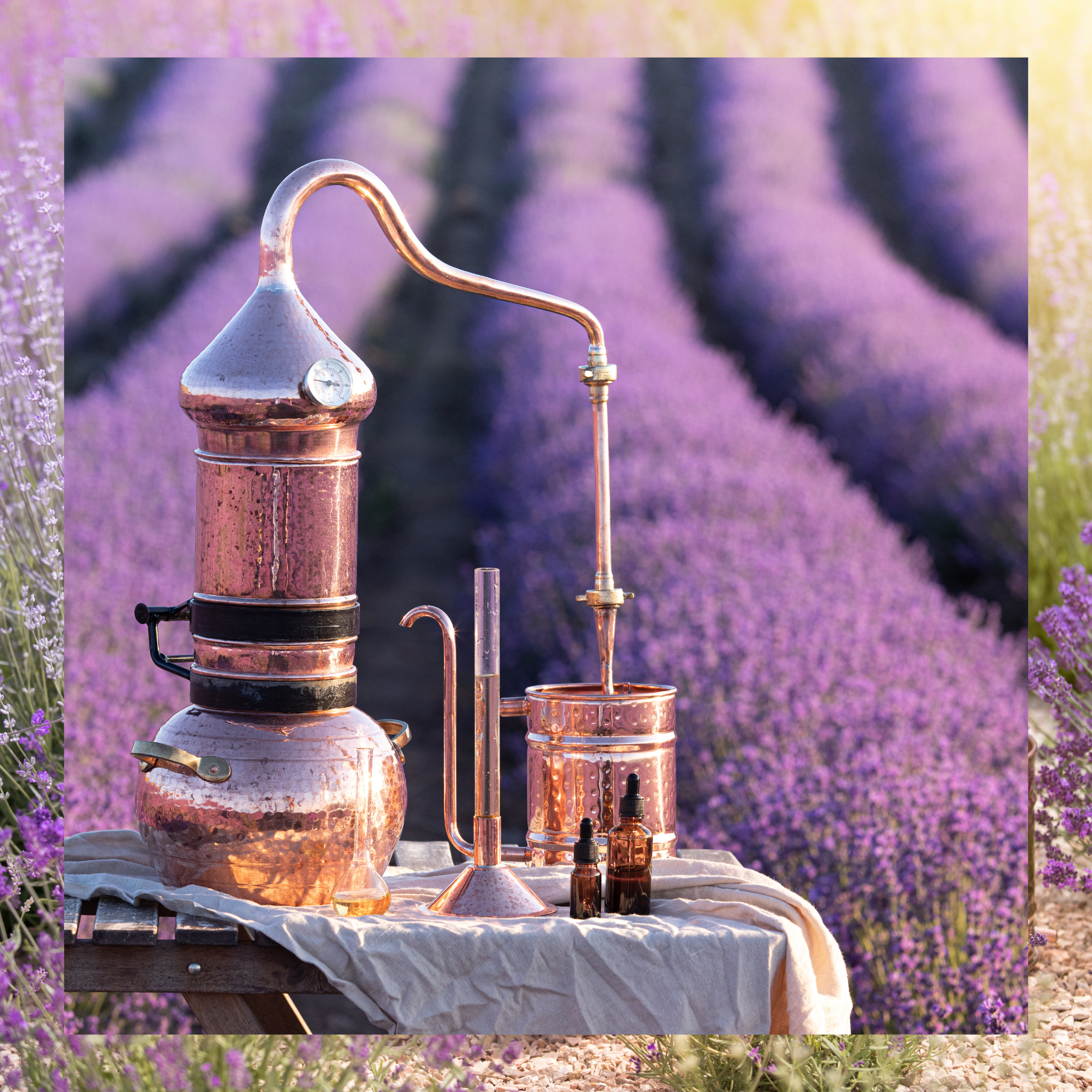
Imagine capturing the spirit of a blooming garden or a crisp forest inside a small bottle. That’s what essential oils do. They bring a piece of the natural world into our daily lives, offering comfort and a breath of freshness whenever we need it.
Through a fascinating transformation, every leaf, petal, and bark contributes to a final product that carries both the aroma and the beneficial properties of its source. This magical process turns a simple plant into a powerful tool for wellness, embodying the art and science of nature’s alchemy.
Popular Plants and Their Oils
Essential oils come from various plants, each with unique benefits and uses. Here are three of the most popular plants used for essential oil extraction:
- Lavender: Known for its soothing and calming properties, lavender essential oil is often used in aromatherapy to help reduce stress and promote better sleep. It's also applied topically to ease burns and skin irritations.
- Peppermint: This oil is appreciated for its refreshing and cooling effects. It's effective in relieving muscle soreness and is commonly used to aid digestion and soothe stomach issues.
- Tea Tree: With strong antiseptic qualities, tea tree oil is a powerful choice for treating wounds and preventing infections. It's also popular in skincare, particularly for treating acne due to its antibacterial and anti-inflammatory properties.
From Plant to Product: The Step-by-Step Process of Making Essential Oils
The journey from raw plant material to the final bottled product is both an art and a science. Each step is crucial to ensure the highest quality and efficacy of the oils.
Choosing the Right Plant Material
The first critical step in the extraction process is selecting the appropriate plant material. The quality and type of plant, its growth phase, and the specific part of the plant used (such as flowers, leaves, or roots) significantly impact the oil quality produced. Plants are typically harvested when their oil content is highest, which varies depending on the plant species and environmental factors.
Preparation of Plant Material
Once harvested, the plant materials are prepared for extraction. This involves cleaning the plants to remove dirt and debris and then drying or chopping them to increase the surface area for more efficient oil extraction. Proper preparation ensures that the maximum amount of oil can be extracted.
Extraction Methods
The extraction method is chosen based on the plant material type and the essential oil's desired quality.
Rosin Pressing
A rosin press is a device for extracting essential oils from plant materials through heat and pressure. By using proper equipment, you can efficiently harness the natural essences without the use of solvents, ensuring a pure and potent product. This method is favored for its simplicity and the high-quality oils it produces.
Steam Distillation
Plant materials are placed in a distillation apparatus over water. Steam passes through the plant material as the water is heated, vaporizing the volatile compounds. These vapors are then cooled and condensed back into liquid form, separating the essential oil. Steam distillation is favored for its ability to preserve therapeutic properties.
Cold Pressing
Typically, citrus oils are extracted by mechanical pressing the fruit's peel. No heat is involved, which preserves the oil's natural and fragrant properties. This method is ideal for maintaining citrus oils' bright, fresh aromas.
Solvent Extraction
Solvents dissolve the aromatic compounds of the plant. The solution then undergoes a process to remove the solvent, resulting in a highly concentrated oil or 'absolute.' This method is often used for delicate flowers such as jasmine and roses that are too delicate due to the high temperatures of steam distillation.
CO2 Extraction
This method uses carbon dioxide under high pressure to extract the essential oils. When the pressure is released, CO2 returns to its gaseous state, leaving behind the oil. This method is highly efficient and can extract oils closer to the natural plant than other methods, as it doesn't involve high heat or chemical solvents.
CO2 extraction is particularly useful for capturing the "complete essence" of the plant, making it a popular choice for high-end perfumeries and users seeking the most therapeutic effects.
Separation and Refinement
After the initial extraction process, the resulting mixture often contains water and other impurities that must be meticulously removed to ensure the quality of the essential oil. Techniques such as decantation are employed to separate the oil from the water. This step is crucial for maintaining the integrity of the oil’s aromatic and chemical properties.
Further refinement might be required depending on the essential oil's intended use. This additional purification step is necessary to meet specific standards of purity and quality, ensuring the oil is suitable for therapeutic, aromatic, or culinary applications. Each type of oil may require different refinement techniques to achieve optimal results.
Quality Control
Ensuring the purity and potency of essential oils is paramount, and it involves rigorous quality control measures throughout the production process. Once extracted, each batch of essential oil undergoes a series of tests, including gas chromatography and mass spectrometry. These analytical techniques allow producers to verify the chemical composition of the oils, ensuring they are free of contaminants and impurities and meet stringent quality standards.
In addition to these in-house tests, many producers also engage third-party laboratories to conduct further testing. This independent verification adds an extra layer of credibility and assurance, ensuring that the essential oils are safe and effective for consumer use. Such meticulous attention to quality helps maintain the therapeutic integrity of the oils and guarantees consumer trust in the products.
Bottling and Storage

Photo by Anna Shvets from Pexels
The final step in producing essential oils involves meticulous bottling and storage to preserve their therapeutic properties. The oils are transferred to airtight containers that shield them from light and heat, critical factors that can degrade their quality over time. Proper storage is paramount, ensuring the oils retain their effectiveness and aroma for extended periods.
This careful containment prevents the detrimental effects of environmental exposure, such as oxidation and evaporation, which can significantly reduce the oils' potency. By prioritizing these storage conditions, the longevity and efficacy of the essential oils are greatly enhanced, maintaining their intended benefits.
Wrapping Up
Transforming plants into essential oils is a meticulous art that captures a drop of nature's magic in every bottle. This journey from raw botanicals to pure, potent oils ensures that each essence retains its therapeutic qualities. These essential oils naturally enhance health and wellness by adhering to rigorous quality control measures from harvest to storage. Embrace the essence of the earth's bounty as these oils bring the magic of nature directly into daily life, enriching both mind and body.



Deje un comentario